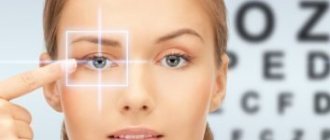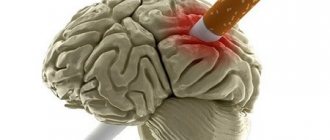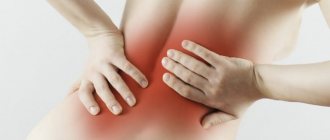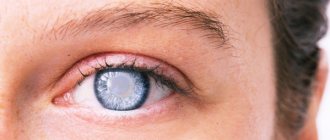Vegetative crises
VSD occurs as a chronic disease with periods of exacerbation. These exacerbations are called vegetative crises.
- Sympathoadrenal vascular crisis is manifested by rapid heartbeat, facial flushing, increased blood pressure (BP), chills, cold extremities and sudden agitation.
- A vagoinsular crisis, or a crisis of the hypotonic type, begins with general weakness, shortness of breath, sudden sweating, a feeling of cardiac arrest, and a decrease in blood pressure.
- Mixed type of crisis with VSD - the symptoms of both crises are combined.
In addition, people suffering from VSD may experience phobias, self-doubt, mood lability, panic attacks (PA) and inability to concentrate. The appearance of such complaints can push a person to become addicted to some bad habits, such as smoking.
Vegetative-vascular dystonia - causes and symptoms
This disease manifests itself differently in each person, not corresponding to the most pronounced manifestation of organ pathology. Manifestations of vegetative-vascular dystonia are divided into two types: vagotonia and sympathicotonia.
Vagotonia
This form of the disease is manifested by major hypochondria. A person's performance decreases and fatigue increases. In addition, sleep disorders and memory impairments are observed. People of this type are often indecisive, apathetic, fearful, and prone to depression. Sensitivity to stuffiness, cold, often a feeling of lack of air and chilliness, vestibular disorders, nausea and other symptoms. Cardiovascular disorders are manifested by bradyarrhythmia, pericardial pain, and decreased blood pressure.
Sympathicotonia
Such people are quick-tempered, temperamental, their mood is changeable, they are often distracted, often absent-minded, and neurotic states are observed. This symptomatology is characterized by a feeling of heartbeat and a feeling of heat. Such people suffer from pale and dry skin, pronounced white dermographism, numbness and paresthesia, poor heat tolerance, and atonic constipation. The heart suffers from tachycardia and high blood pressure.
What do habits and illness have in common?
What do smoking and VSD have in common? First of all, you should consider what changes in the body occur after smoking a cigarette due to nicotine entering the body.
How does the body react to smoking a cigarette? After smoking one cigarette, the following vegetative changes occur in the human body:
- The heartbeat quickens and pulsation appears in the temples, blood pressure rises due to the release of adrenaline and vasospasm.
- Possible severe agitation or PA.
- In some cases, arrhythmia appears.
- Dizziness occurs when you puff too hard.
- It is possible to develop a headache due to spasm of cerebral vessels.
These symptoms get worse if you smoke 2 or more cigarettes one after another.
Reviews from doctors about the dangers of smoking indicate that it provokes not only metabolic disorders, which can lead to atherosclerosis of blood vessels, but smoking also causes a sharp spasm of the body’s blood vessels, which leads to impaired blood circulation and the appearance of dizziness, a feeling of “interruptions” in the functioning of the heart , headache. Therefore, smoking with VSD can intensify symptoms and aggravate the course of the disease.
Association with a bad habit
Nicotine belongs to the class of alkaloids and has an immediate stimulating effect on the nervous system. However, such effects should be avoided in VSD.
Symptoms characteristic of VSD are aggravated by smoking. For example, dizziness accompanying vegetative-vascular dystonia becomes even more pronounced. Systematic use of nicotine leads to damage to the heart and liver.
Due to impaired absorption of ascorbic acid in the body, the condition of blood vessels worsens - their walls begin to collapse faster under the influence of antioxidants.
Resin also has a negative effect. Due to its sedimentation in the lungs, the process of normal oxygen absorption is disrupted. This leads to increased shortness of breath. The result of a lack of oxygen is the occurrence of panic attacks. Due to a decrease in its amount in the blood, the resources of the main muscle of the body - the heart - are depleted. An increase in nicotine concentration leads to an increase in cholesterol and lipids, and, consequently, to the formation of atherosclerotic plaques.
The process of blood clotting accelerates. Possible results are myocardial infarction, cerebral stroke, pulmonary infarction.
The following symptoms of VSD are also more pronounced:
- blood pressure surges;
- nausea;
- weakness;
- tachycardia.
Development of a vicious circle
Let's consider the development of a vicious circle: illness and bad habit.
Smoking leads to exhaustion of the nervous system, which further aggravates the symptoms of VSD. And constant nervous tension and a feeling of uncertainty and nervousness, which are typical for patients suffering from vegetative-vascular dystonia, push a person to smoke. Thus, a vicious circle results: the habit of smoking provokes VSD, and the disease itself pushes one to light a cigarette. This snowball is constantly piling up and makes it impossible to defeat this disease. In addition, smoking against the background of VSD can provoke PA.
The disease should not be underestimated, since if treatment is not started in a timely manner, it can cause the development of other diseases of the cardiovascular system - hypertension.
The target of nicotine is the vessels of the whole body, but especially the vessels of the heart. Increased heart rate after smoking increases the myocardial need for oxygen, but the vessels affected by nicotine cannot provide this, so hypoxia of the heart muscle occurs.
Note! The same changes are observed in the vessels of the brain.
Therefore, the question of whether it is possible to smoke with VSD can be answered unequivocally - of course, NO. Nicotine addiction causes constant internal tension. In emotionally labile people, this can provoke panic attacks or the development of prolonged depression.
Effects of cigarettes on the cardiovascular system
Nicotine has a bad effect on all parts of the body, but the respiratory system is primarily affected. It is from this area that the spread of harmful substances to other areas, including the cardiovascular system, begins. A person who smokes does not understand that a moment’s pleasure can cost him his health, and often his life.
During the combustion of paper and the mixture in the cigarette, a huge amount of various chemical elements are released, which are toxins that poison the entire body. Once in the lung area, nicotine is quickly absorbed into the blood, beginning to spread throughout the body. First, this substance penetrates into large internal organs, and then into all others, right down to the cells that form hair. As a result, the toxins reach the brain area, exerting their destructive effect. Nicotine increases the functioning of some parts of this organ and reduces the activity of others. Immediately after a person smokes a cigarette, changes also begin in the cardiovascular system.
What's happening:
- increased pulsation;
- metabolic disorder;
- oxygen is consumed by the body in increased volumes;
- the level of cholesterol in the blood increases;
- blood pressure becomes high.
Due to the action of nicotine, which is a kind of drug, the brain is not able to adequately respond to a toxic threat; it does not recognize its nature and degree of danger, which is why it does not resist it.
This can seriously harm the entire body. If nicotine entered the body once, then after a few hours there would be no trace of its presence left. But, unfortunately, smokers use cigarettes regularly.
It is known that it is precisely this bad habit that often provokes the development of myocardial infarction. Smoking increases the likelihood of this disease by 5 times, in contrast to patients who do not have such a detrimental effect on their body. This pathological process is due to the fact that the muscle fibers of the heart, due to exposure to toxins, become less elastic and flexible, and this leads to dystrophic changes in the organ. This factor is often considered the main cause of heart attack. In addition to the disease itself, there are many more pathologies caused by its complications.
Cardiovascular disorders:
- the blood becomes thick;
- blood circulation throughout the body slows down;
- atherosclerotic vascular damage;
- the amount of oxygen in the blood decreases;
- thrombus formation;
- destruction of artery walls;
- increased blood clotting.
Such pathologies lead to various disorders. Atherosclerosis of the vascular walls is often the cause of ischemia of the main organ, which entails additional deviations. Poor circulation and lack of oxygen trigger the development of severe disorders in the body. If you smoke for a long time, you can provoke the occurrence of serious cardiovascular diseases, leading to disability and even death.
Following simple rules for prevention
Prevention of VSD consists of following simple rules:
- Active lifestyle and following healthy eating rules.
- Sanitation of chronic foci of infection.
- Getting rid of bad habits - smoking.
- Be sure to alternate work with rest.
- Avoiding stressful situations to prevent PA.
- Having healthy, full sleep.
In addition, treatment of VSD begins with lifestyle modification - normalization of work and rest and daily gymnastics.
The relationship between smoking and panic attacks
Anxiety is an unpleasant sensation, during which a person tries to master the situation as quickly as possible and keep it under control. This is a big stopper for ambitious individuals who are constantly in pursuit of results and achieving goals.
Severe stress, anxiety, and regular tension lead to the fact that we do not have time to fully rest, relax and replenish our reserves of strength and energy. Information flows only worsen the situation, because in order to unload, we often go to social networks and instant messengers. As an opportunity for relaxation, a source of additional inspiration, or a moment to unwind, things that are harmful to the health of the body are often used: cigarettes and coffee.
Psychology courses
Psychotherapist of the 21st century
Teacher: Aina Gromova
For any level of knowledge
Effective methods for treating anxiety disorders, phobias, panic attacks and depression. Mistakes in counseling clients with anxiety disorders and psychosomatic illnesses.
for free
More details
It seems that a break of this kind will provide an opportunity to relax and give additional motivation, but in reality our body receives a portion of harmful substances in the form of nicotine and caffeine, which provoke problems of a physiological and psychological nature. Panic attacks are among the negative consequences that can be experienced by both heavy smokers and those who like to “indulge” in a cigarette or two.
When you decide to work with consciousness and turn to a psychologist for help to get rid of panic attacks, one of the first questions the specialist asks is: “Do you smoke?” An honest answer is necessary to collect anamnesis and make initial assumptions about possible sources of panic. Some patients begin to worry: Is it possible to smoke during attacks? Will they appear if I quit a bad habit? Should we expect other manifestations after quitting cigarettes?
Statistics show that smoking very often provokes a panic attack. If you regularly experience such attacks, the first thing you need to do to get rid of them is to forget about cigarettes. The essence of the problem is not only that harmful substances enter the body, but also that they provoke the activity of neurotransmitters such as adrenaline and glutamate. These substances motivate the so-called “narrowing of consciousness,” which is also characteristic of panic attacks.
Heavy smokers who experience panic attacks do not always understand the cause-and-effect relationships and are able to quickly give up the bad habit. To overcome addiction, and with it attacks of uncontrollable fear, you need to set a clear goal and find an important incentive. As a result, you can not only get rid of panic attacks, but also improve your psychological and physical health.
It is worth remembering that when you smoke a cigarette, you release a dose of nicotine into your body. If a panic attack occurs at this moment, the brain remembers the moment and can subsequently expect it when smoking again. Or vice versa, after a panic you may want to smoke. Neither in the first nor in the second case a beneficial effect is observed. In minimal quantities, nicotine can relax, but in large quantities it causes negative consequences.
Quitting the habit, but avoiding the consequences
We will describe how to quit smoking without consequences. A person quitting smoking may experience anxiety, malaise, and internal tension due to a lack of nicotine in the body. Therefore, in order not to relapse, quitting smoking should be replaced with some exercises that can facilitate the process of getting rid of the bad habit.
- Perform breathing exercises.
- As prescribed by your doctor, you can additionally take sedatives or anxiolytics, which will help you cope with addiction more easily.
- Smoke breaks with colleagues can be replaced with a shared tea party, and a cigarette in your mouth with candy.
It should be remembered that VSD and smoking are incompatible things, since nicotine addiction aggravates the course of the disease and increases the risk of complications.
Interaction between VSD and smoking
Neurocirculatory dystonia (NCD) is a chronic polyetiological functional disease, which is based on disorders of neuroendocrine regulation. It manifests itself as a variety of cardiovascular, respiratory and vegetative disorders, asthenia, disaptation of the body, but has a favorable prognosis.
Disturbances of neuroendocrine regulation occur at all levels. The leading role is given to damage to the structures of the hypothalamus, which is the highest center of the autonomic nervous system and the “main” organ of the endocrine system, which controls all others. This determines the dysfunction of the sympathoadrenal and cholinergic systems. Nicotine puts pressure on these same “levers”.
The main chemical that affects the body when smoking is nicotine.
Nicotine in its structure is similar to one of the main mediators of the nervous system - acetylcholine, and therefore is able to bind to nicotinic-type acetylcholine receptors and cause a response.
These receptors are located in the ganglia of the autonomic nervous system and neuromuscular junctions. This determines the effects of nicotine: by binding to one of the most common receptors in the body, it acts on all structural and functional formations, and on the central nervous system, successfully passing through the blood-brain barrier.
The main target of nicotine in the central nervous system is the limbic system (therefore, addiction when smoking is more psychological than physical), but the most important point of application among these structures is the hypothalamus. The one that is responsible for the endocrine and autonomic nervous systems.
Outside the central nervous system, nicotine stimulates the sympathetic system: blood vessels constrict, blood pressure rises, heart rate increases, activity and anxiety levels increase due to the increased release of adrenal hormones.
As a result, the smoker, once again dragging on a cigarette, provokes the activation of already inadequately functioning structures, risking an extraordinary attack of dystonia.
Test for smokers
Smoking with hypotensive dystonia
The hypotensive form is manifested by a decrease in blood pressure below the usual, normal age norm. Due to this, a person is often bothered by headaches, weakness, drowsiness, decreased activity and performance, and fainting is possible during an attack. If a person smokes with this form of dystonia, he will often develop the following symptoms:
- Exhaustion of the nervous system as a result of impaired production of acetylcholine, which ultimately leads to increased asthenic symptoms - weakness, decreased performance, apathy.
- Disturbances in the functioning of the heart . After smoking, the heart rate temporarily increases. Due to short pauses between heartbeats, ischemic zones may appear in the myocardium, because nicotine leads to vasospasm, including coronary ones.
- Ischemic disorders in the brain . In smokers with VSD and low blood pressure, the risk of stroke increases several times due to the chronic development of hypoxia and ischemia.
The longer and more you smoke, the greater the risk of the consequences of smoking, which will be difficult to completely eliminate.










